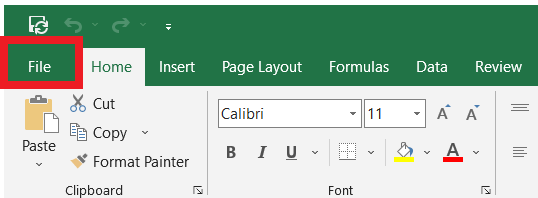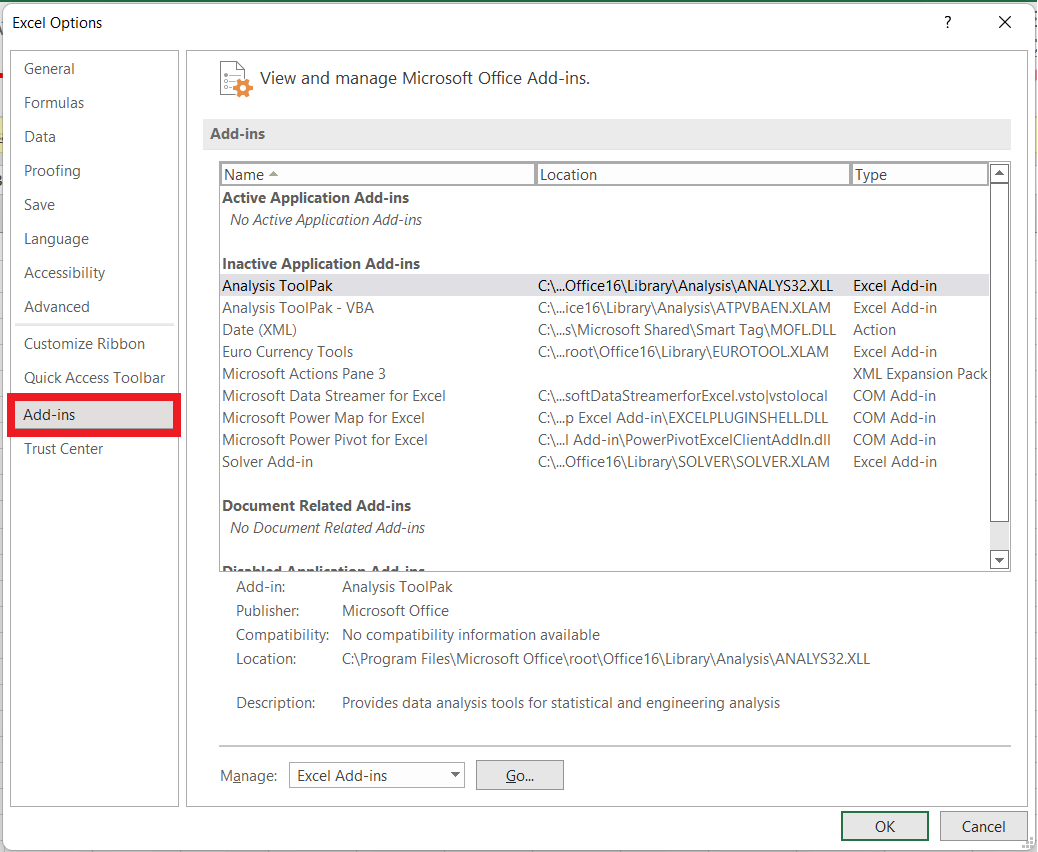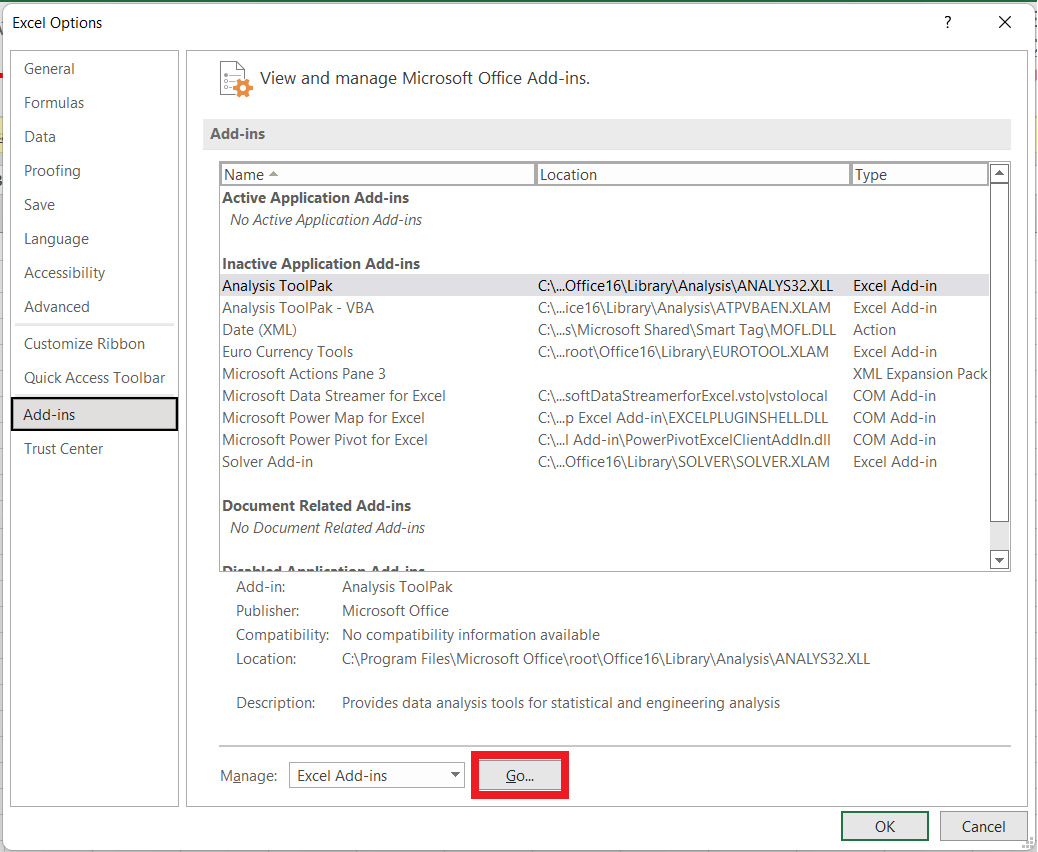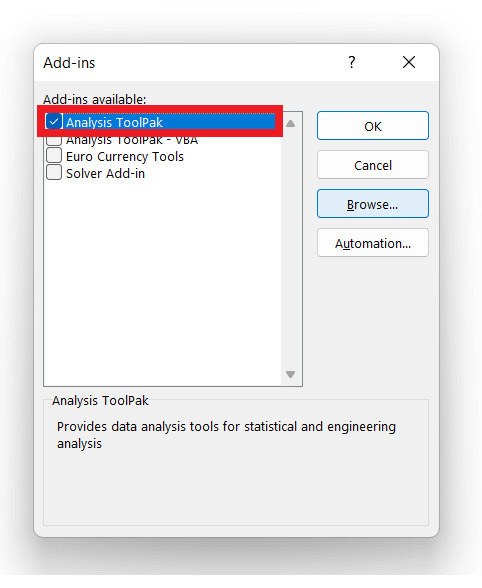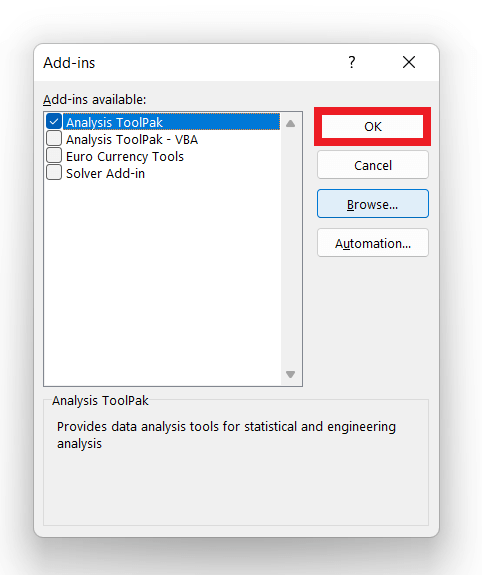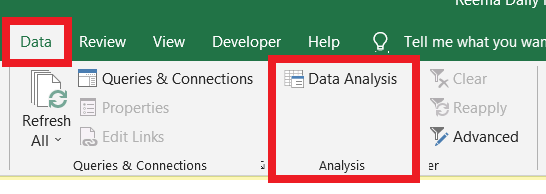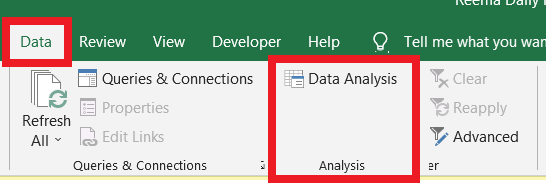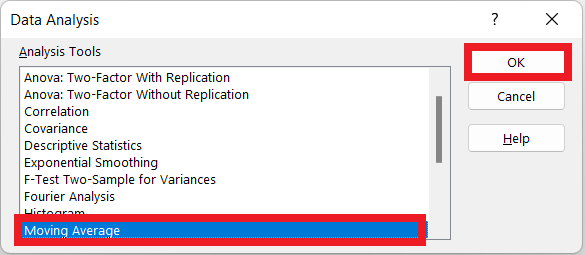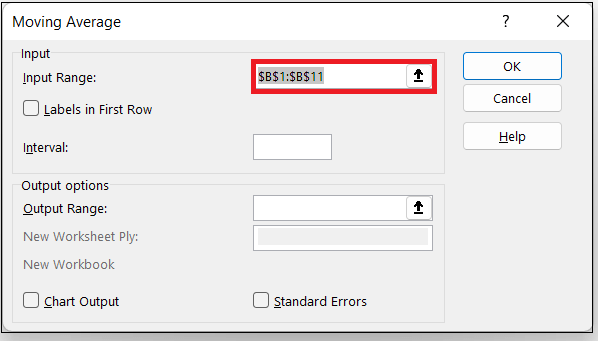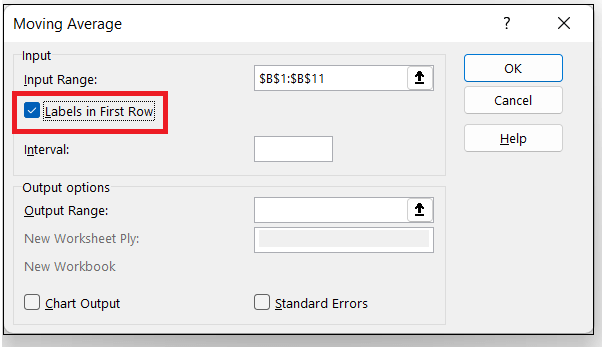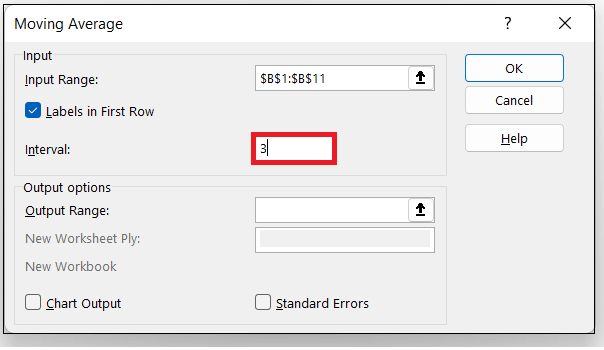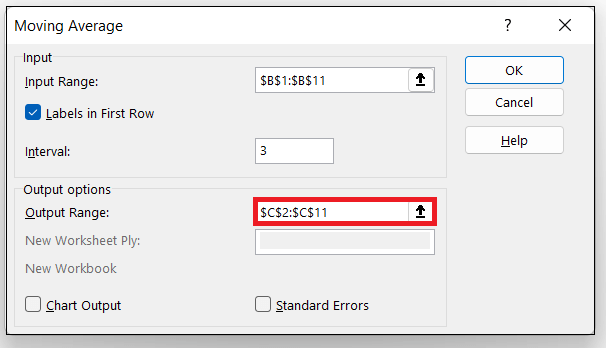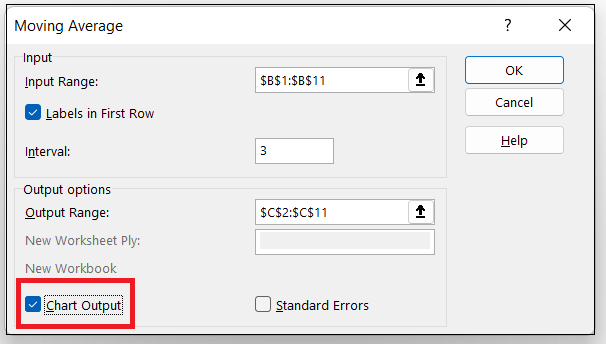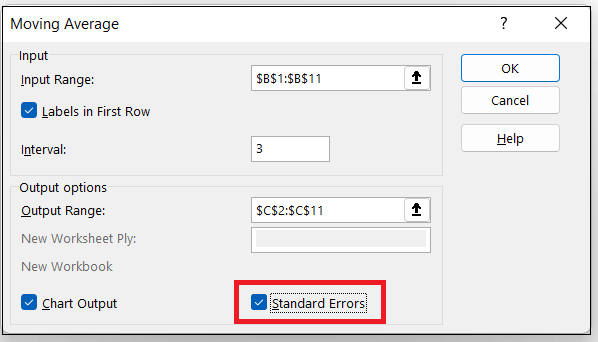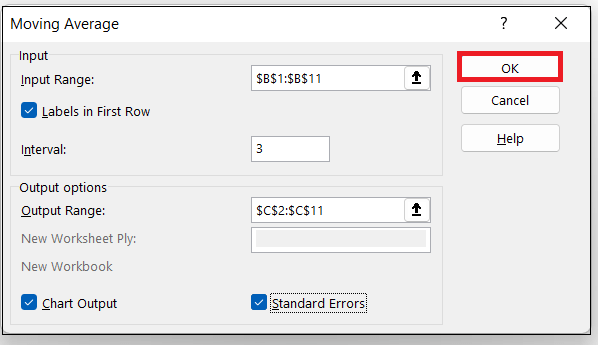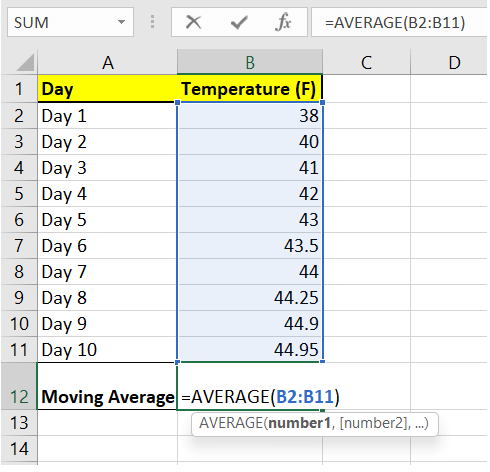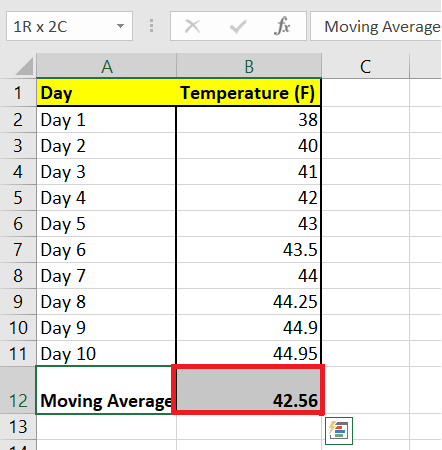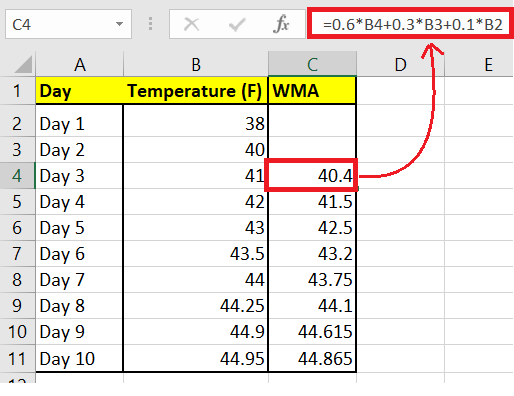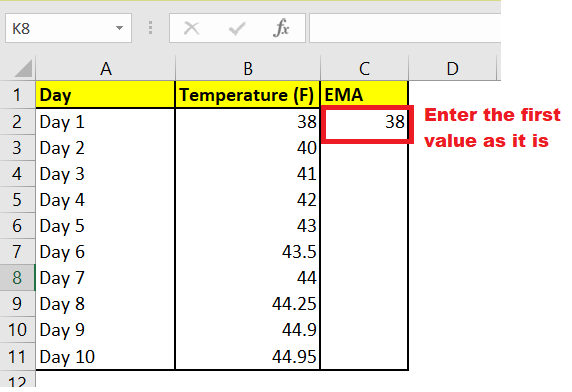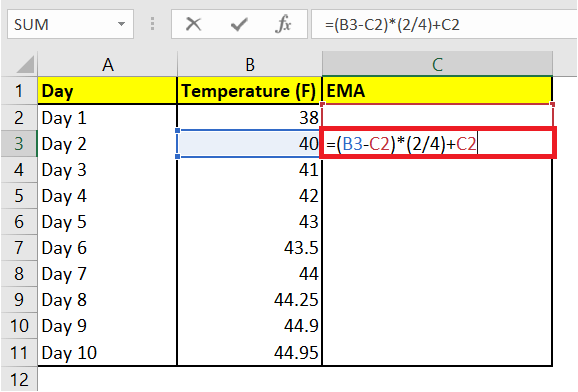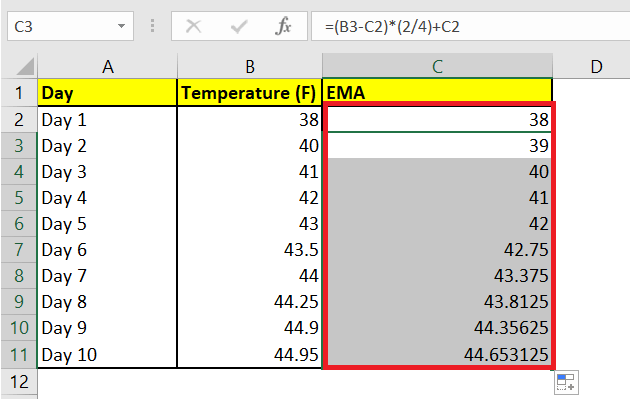Moving Average Formula"A moving average (commonly known as a rolling average or running average) is an average calculated on the basis of subsets of data at specified intervals." Computing an average at some intervals is essential as it smooths out the data by minimising the effect of unexpected fluctuations. Hence, Moving Average was introduced in Excel to display the overall trends, especially in a chart, easily. The larger the interval value, the more smoothing occurs since more data points are covered in each calculated average. Moving average is commonly used in the corporate world for technical analysis. However, it is also heavily used by stock-market analysts on a regular basis. For example, let's suppose that you've collected daily temperature data past 10-days. If you are asked to compute the 3-day average temperature specifically for Day-3, you will compute the moving average temperature data of days 1, 2, and 3. Next, if you are asked to provide the moving temperature for Day 4, you will calculate the average of Day 2, 3, and 4. Since we added a new one, we used the latest data, but the time period of three days was kept the same to calculate the moving average. Types of Moving AverageIn Excel, there are three types of Moving Average, which are as follows:
Calculating Moving Average using Data Analysis ToolpakBecause of the importance of Moving Averages, Excel introduced a built-in tool to quickly calculate the simple moving averages. The tool is known as Data Analysis Toolpak. Many times, you might not find the Data Analysis Toolpak option on your Excel ribbon. Don't worry, you just need to do is to quickly quickly enable it from Excel settings. NOTE: If you find the Data Analysis Toolpak option already enabled in the Excel Data Tab, skip the following steps and directly jump on calculating moving averages.Steps to Enable Data Analysis Toolpak in Excel Click on the Excel Data tab and look for the Data Analysis option. If you don't find it, follow the given below steps to make it appear in the Data tab section:
Steps to calculate Moving Average using Data Analysis In the below table, we have collected daily temperature information for 10 days. Using the details compute the three-day moving average and fetch the output for the simple weather forecasting. 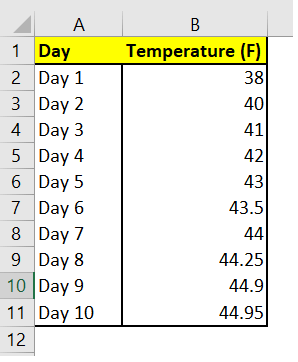
To calculate moving averages for the above data set using Data Analysis Toolpak, follow the below-given steps:
NOTE: Ensure that the entered range should be absolute cell addresses. In absolute cell addresses, the columns and rows are locked with $ signs, as in $B$1:$B$11.
Calculating Moving Averages (SMA, WMA, EMA) Excel using FormulasSince the above method was only useful for calculating the Simple Moving Averages, we need a dynamic solution that will help us to calculate any type of moving average. Therefore, the best solution to the above problem is to use Excel's inbuilt AVERAGE formula. In fact, if your only requirement is the moving average value (and not the standard error or chart), the best approach to fetch the output is by using the Average formula (and faster) rather than using the Data Analysis Toolpak. Example 1: Calculate Simple Moving Average (SMA) using Excel Average Formula methodLet's Suppose you have the following Excel data and you want to calculate the 3-point simple moving average: Following are the steps to calculate moving averages for the above data set using formulas:
Example 2: Calculate the Weighted Moving Average using Excel Formulas methodFor this example, let's suppose you need to calculate the 3-point Weighted Moving Average for the following Excel data, where 50% weight is allocated to the new data points, 30% to the one before it and 20% to the previous ones. 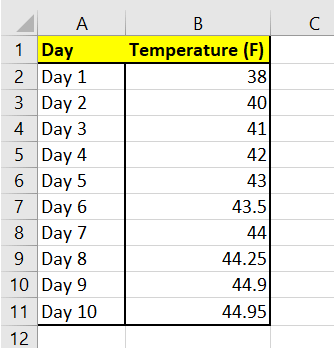
Following are the steps to calculate weighted moving averages for the above data set using formulas:
Explanation of the above formul Since in the question, we are asked to calculate a 3-point Weighted Moving Average (WMA), therefore we are left the first two cells empty (Day 1 cell and Day 2 cell), and we have applied the formula from the third day onwards. Example 3: Calculating Exponential Moving Average using FormulasExponential Moving Average (EMA) is a method where the user gives more weight to the latest data set, and further, the weights keep decreasing exponentially for previous data values. The Formula to compute the Exponential Moving Average for a three-point data value is as follows: EMA = [Latest Value - Earlier EMA Data Value] * (2 / N+1) + Earlier EMA Where, N represent 3 (because in the question we are asked to calculate the three-point EMA) Note: There won't be any earlier data value for the first EMA data set to calculate EMA. For the initial data set, it simply accepts the data value as it is and considers it as the EMA value. You can then use this value for future calculations.Following are the steps to calculate moving averages for the above data set using formulas:
Errors with Moving AverageExcel returns the error message into the cell if the user doesn't provide sufficient data to calculate a moving average for a standard error. You can notice several cells that display this error message as a value.
Next TopicSum Formula in Excel
|
 For Videos Join Our Youtube Channel: Join Now
For Videos Join Our Youtube Channel: Join Now
Feedback
- Send your Feedback to [email protected]
Help Others, Please Share




